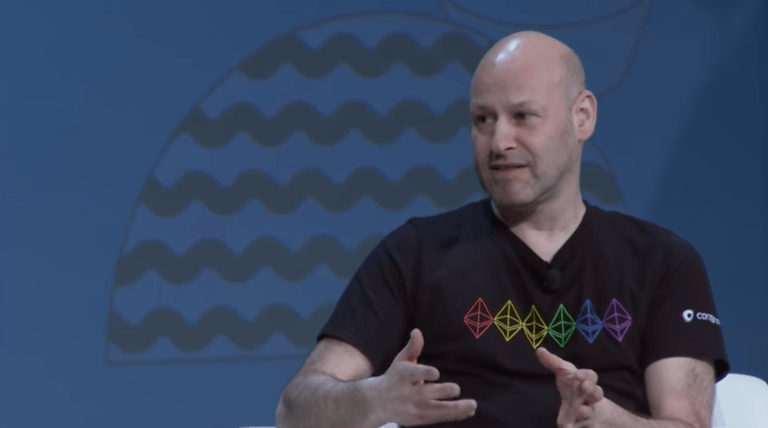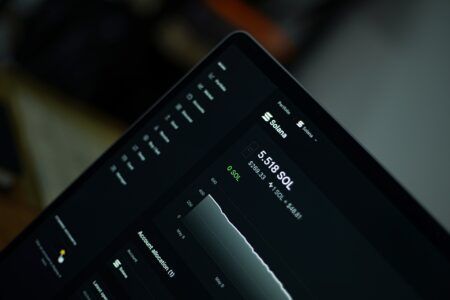At last week’s Deconomy 2019 conference in Seoul, South Korea, Joseph Lubin, co-founder of Ethereum and founder of ConsenSys, gave a speech (titled: “The State of the Blockchain Ecosystem”) that explained why the tokenized world of the future needed “a maximally decentralized base as the foundational settlement layer of the global economy,” and why Ethereum’s main competitors—Hyperledger Fabric, Corda, EOS, Polkadot, Cosmos, and DFINITY—are not viable options.
Here is how Lubin started his critique of Ethereum’s competition:
“Assuming we agree that freedom, choice, and maximal trust are good things, what would be the optimal choice at this point for a global settlement layer on which we can re-architect our industries and collective endeavors?”
Fabric
- “Nope, there is no chance, in my opinion, of it ever evolving beyond relatively small networks for private, permissioned systems.
- Fabric can issue tokens, but only for narrowly circumscribed situations.
- The Fabric technology promotes platform lock-in.”
Corda
- “R3’s Corda is blockchain inspired software for mostly banking industry applications.
- It is more about point-to-point trust than a shared source of truth.
- Corda can issue tokens, but only for narrowly circumscribed situations.
- And Corda, as a technology, promotes platform lock-in.”
EOS
- “As has been debated endlessly, a platform controlled by 21 crypto bros is just not all that decentralized.
- They can collude and censor if they wish.
- Governments and other well resourced actors can bribe them or force them to act against their will and against the well-being and security of the people using the platform.
- It has been argued that if these block producers start behaving badly, they will be voted out, and that is the main source of decentralization in the system.
- Unfortunately, there is no good way for anyone to detect that they are colluding, or have been corrupted, or forced into some sort of improper action.
- I can imagine EOS being used for some games, but not even for games that have high value tokens.
- It will be too easy to organize to steal value on this platform.”
Polkadot
- “The Polkadot system is being built by Parity, the developers of the Ethereum Parity client. Parity is a very strong team.
- Polkadot will achieve scalability by having one main heartbeat chain—the relay chain—with multiple parachains hanging off of it.
- Polkadot is scheduled to launch its relay chain mechanism in Q3 of 2019.
- The Polkadot worldview sees Ethereum connected as a potential ‘virtual parachain’ via a bridge.
- For any parachain to become attached to the Polkadot relay chain, it must be voted in by the holders of dots—the Polkadot system token. These voters can also choose to pause a parachain or remove a parachain from the system if it is deemed to be out of compliance with what the majority prefers.
- Effectively, this is a permissioned system, and white listing and blacklisting of entire parachain networks is a core tenet of the governance system of Polkadot.
- One could imagine a parachain choosing to be permissionless and allowing anyone to upload a DApp, but ultimately the DOT holders might take issue with this, as they might be considered by authorities to be responsible, so it would probably be too dangerous a policy for a parachain to offer.
- It is likely that this will be a permissioned and highly controlled blockchain platform.”
Cosmos
- “Cosmos also has a solid team of technologists.
- Cosmos doesn’t really propose a base trust layer.
- It seems more focussed on enabling different sovereign platforms to interoperate side-by-side.
- And it doesn’t appear that there will be much interoperation between platforms in the next few years beyond enabling tokens to move back and forth across network boundaries.
- The Cosmos team feels that this will be the main and most important interoperation use case.
- I expect Cosmos to have good utility as a layer two solution, linked into the base trust layer when necessary.
- Cosmos also expects to interoperate with Ethereum through a token bridge.”
DFINITY
- “Dfinity has a very strong team.
- Because Dfinity is currently a closed system controlled by a small number of investors and token holders—though they have indicated that they will open source their project at some point—it is hard to tell, but it appears to me that they are less interested in being a global base trust and settlement layer and more like a somewhat decentralized AWS replacement.
- They are likely to do a very good job of this whenever it gets released.
- Ultimately it does not seem viable for Dfinity to be a base trust layer for the planet as there is one fundamental design choice that they and Cosmos made that will prohibit this.
- Both Dfinity and Cosmos favor safety or consistency over availability and liveness. This means that if 34% of the nodes on their networks find themselves on the wrong side of some great firewall that blocks traffic for a period, their entire global network will halt, freezing every system built on it.
- And there are other known related failure modes. This is a non starter for many different classes of application.”








